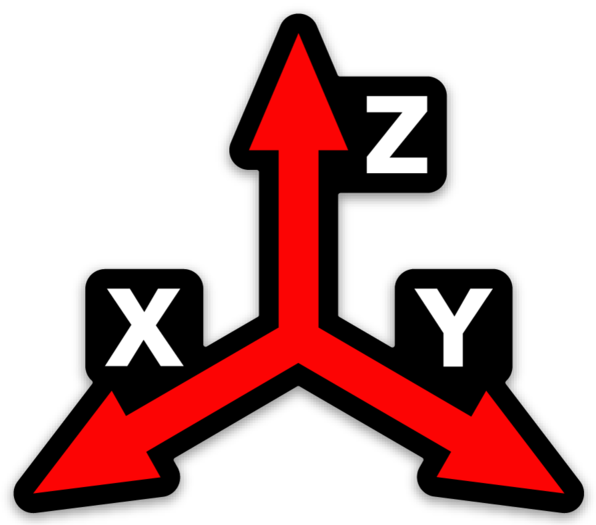Swing Angles
Coaching Playbook:
Swing Angles
I've been a teacher for 22 years (which is literally more than half my life!), and a student of the swing for as long as I can remember. And I can remember years and years of study material that examined the golf swing as a two-dimensional movement in a photograph or a video. I heard it characterized as a pendulum, or as a simple single twist of the club. I'm not criticizing those early attempts at understanding how the club really moves in a swing. The technology to really "see" what is happening and actually measure it has improved exponentially in the last 10 years.
Still, it was not until Dr. Steven Nesbit helped me put together the Jacobs 3D swing analysis program that we were really able to examine the true rotation of the club as it translates through the swing. The club is really moving like a plane can in flight—in three different axes at the same time. In a swing, those angles are represented in the logo you see on my shirt and my website—alpha, beta and gamma. What are the angles? One is how the club moves side to side. The other is how it pitches, and the third is how it rotates or twists around itself.
We're going to take some time in the next few Coaching Playbooks to talk about each of these axes, what they are, and why it's important to know about what they do and how they work together to make good (and bad) swings.
In the video below, I'm going to start you off with a discussion of beta—the pitching rotation of the club. It's one people get confused about a lot, because they equate it to the lag angle or L relationship between the lead forearm and the shaft of the club. But that L shape is a snapshot in time, and it doesn't really define the way the club moves in beta rotation. If you focus your attention on that L or on "lag" as it is traditionally defined, you'll miss the important parts you need to know!
The reality is that many players beta rotate the club 10 to 20 degrees away from where it will be at impact even before they get to the top of the backswing. And how you impose beta rotation on the club in the downswing might work differently than you think.
Let's examine that in more detail in a video called “Some Jet Lag in a Golf Swing”

